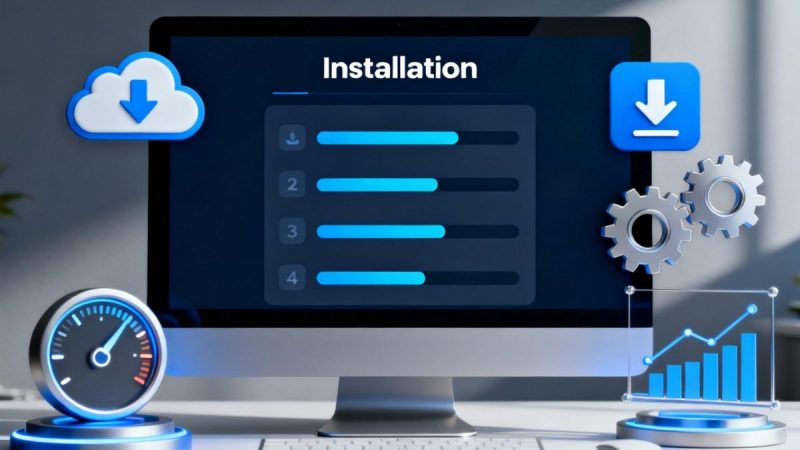A Guide to Data Loss Prevention and Data Tracing

In the modern era of pervasive digitization, the prominence of digital protection has significantly escalated. Components crucial to safeguarding data include Data Tracing and Data Loss Prevention (DLP). Let’s delve into the fundamental principles underpinning these concepts, their significance, and optimal strategies to operationalize them.
The Significance of Data in Modern Enterprises
Data is the lifeblood of modern businesses. It fuels decision-making, powers business operations, and provides valuable insights that drive competitive advantage. But because of its worth, data is also a top target for hackers. As a result, safeguarding this priceless resource has elevated it to the top of businesses’ agendas worldwide.
Introduction to Data Loss Prevention
Businesses use the Data Loss Prevention technique to ensure that sensitive data doesn’t escape their network. This need for protection may have resulted from incidents like unintentional sharing, insider theft committed with malice, or a cyberattack. The primary objective of DLP is to protect data where it is stored, in use, and in transit.
How does Data Loss Prevention Work?
DLP solutions work by identifying and tagging sensitive information such as credit card numbers, social security numbers, or confidential business documents. The software then monitors and prevents unauthorized access or sharing of this information. It accomplishes the task using several methods, such as encryption, data masking, and alert systems.
Let’s illustrate this example of an e-commerce firm utilizing a DLP mechanism to protect its clientele’s confidential data.
In the course of its business, this firm collects and stores a vast array of sensitive data from its customers, such as their credit card details, social security identifiers, and residential addresses. The DLP tool, set up by the company, scans and flags this data as sensitive and adheres to predefined protocols. It assigns ‘markers’ to this data, ensuring it’s handled with extra caution.
Now, consider a hypothetical scenario where an employee attempts to send a file containing customers’ credit card details to his personal email for some unspecified reason. As he clicks ‘send’, the DLP mechanism is activated. Given that the credit card details are flagged as sensitive, the system detects that this data is on the verge of exiting the secure company environment.
At this juncture, the DLP mechanism could adopt various methods to defend this data. It may resort to encryption, transforming the data into a format that’s indecipherable without the appropriate decryption key. It could employ data masking to conceal portions of the credit card details, rendering them worthless if intercepted. Furthermore, it would certainly activate an alert protocol, notifying the company’s security team of this unauthorized attempt to disseminate sensitive data.
As a result, the DLP mechanism thwarts the data from being disseminated while simultaneously alerting the company about a potential data leak. This halt-and-alarm feature enables the implementation of further preventive and rectifying measures. Through this approach, the firm can assure the security of its customers’ confidential data against possible illicit use or theft.
The Value of Data Tracing in Data Security
While DLP strategies aim to prevent unauthorized data sharing, Data Tracing focuses on tracking the movement and use of data throughout an organization. It provides visibility into data flows and can help identify any unusual or suspicious activity that might indicate a potential data breach.
How Data Tracing Works?
Data Tracing involves marking data with unique identifiers or “tags” that allow for the tracking of its journey through various systems and processes. Advanced-Data Tracing tools can record every interaction with the data, providing a detailed record of who accessed the data, when, and for what purpose.
For example, imagine a global corporation holding a highly sensitive file labeled “Operation SkyBlue”, which contains critical business strategic information. To ensure the safety of this pivotal file and track its usage, the firm integrates a Data Tracking system.
This system assigns “Operation SkyBlue” a distinctive marker or ‘label’. This label acts as an exclusive identifier for the file, setting it apart from the rest of the data on the corporation’s network. As the file gets transferred between various systems, whether it’s being sent as an email, transferred to a USB stick, or uploaded onto a cloud service, this label accompanies it.
Now, consider that a staff member opens “Operation SkyBlue”. As soon as he does so, the Data Tracing system logs this action. It documents that the employee interacted with the file, noting the exact date and time of the occurrence, and possibly even the motive, such as whether he merely read the file, made modifications, or distributed it to another person, depending on the system’s sophistication.
Thus, utilizing a Data Tracing system allows the corporation to oversee the movement of “Operation SkyBlue” across its systems. Suppose the file inadvertently lands in an unauthorized location. In that case, the corporation can retrace the route to discover its path, identify the parties involved, and pinpoint the exact time of the event, all of which can assist in identifying potential security breaches and formulating future preventative measures.
Effective Strategies for Data Loss Prevention and Data Tracing
The integration of Data Loss Prevention and Data Tracing necessitates a thorough strategy incorporating personnel, methodologies, and technological tools. Here are some efficient strategies for initiating DLP and Data Tracking:
- Detection and categorization of critical data: Businesses must pinpoint and categorize vital data to recognize which data needs safeguarding and how it ought to be secured.
- Creation of rules and processes: Enterprises need to construct guidelines and operational processes that outline the appropriate treatment of sensitive data, who is permitted access, and the means of its protection.
- Deployment of DLP and data tracking tools: Enterprises need to deploy DLP and data tracking tools that oversee and regulate access to critical data, identify irregularities, and offer report generation and analytical capabilities.
- Staff education: Businesses need to educate their staff on the protocols and processes related to data security, encompassing the proper management of sensitive data and procedures for reporting security breaches.
- Supervision and evaluation: Enterprises must routinely oversee and assess their DLP and data tracking tools to guarantee their effectiveness and ensure they remain current.
Implementing DLP and Data Tracing in Your Organization
Combining DLP and Data Tracing provides a robust defense against data loss and theft. The implementation of these measures, however, needs careful planning.
Assess Your Data
The first step in implementing a DLP or Data Tracing solution is to understand your data. Identify what data you have, where it resides, who has access to it, and what levels of protection it requires.
Choose the Right Solutions
A wide array of DLP and Data Tracing solutions are available on the market. Choose a solution that best fits your business needs, considering factors such as scalability, ease of implementation, and cost.
For example, “a cloud-native data detection and response solution combines traditional endpoint data loss prevention with incident response capabilities in order to empower cybersecurity teams to discover and detect not just individual instances of real-time sensitive data exposure within applications, but the end user activity leading up to these incidents.”
Train Your Employees
Educating employees about the importance of data security and their role in maintaining it is crucial. Regular training sessions can help employees understand the mechanisms of DLP and Data Tracing, fostering a culture of security within the organization.
Bolster Data Protection Measures
The utilization of DLP and Data Tracing methods is crucial for any firm aiming to bolster its data protection measures. Even though setting up these security systems might appear intimidating initially, their advantages significantly surpass any potential difficulties. These strategies equip companies with robust defenses to protect their invaluable resource – data, hence guaranteeing their continuance and prosperity in our current digitized business landscape.
By Prasanna Peshkar






